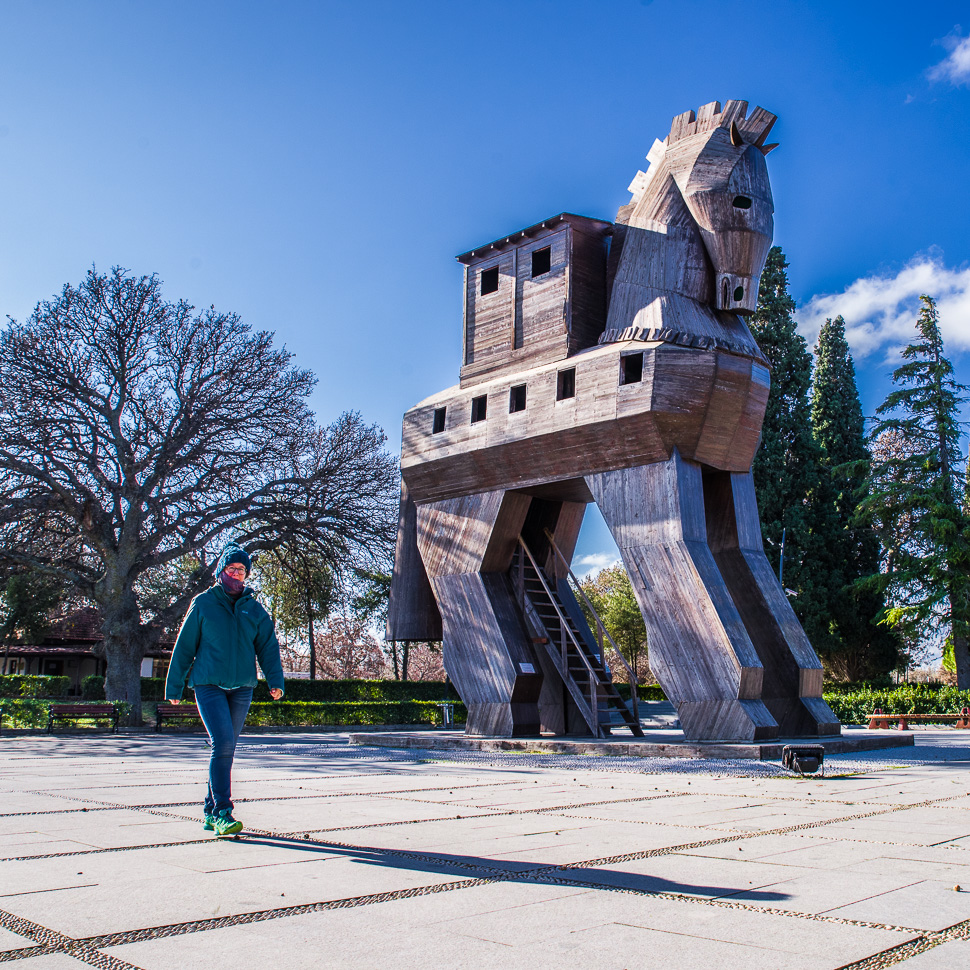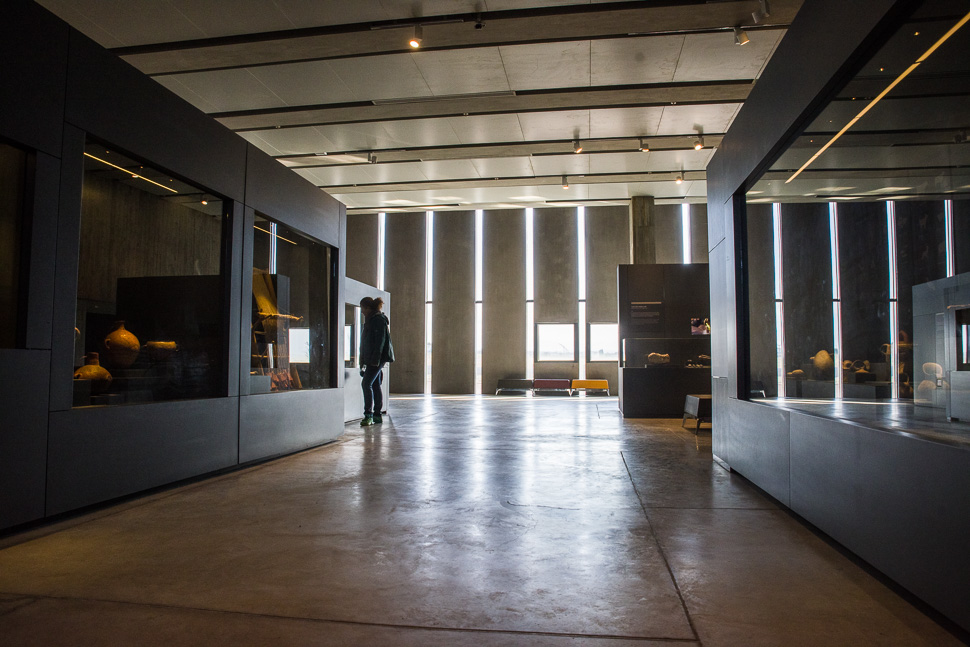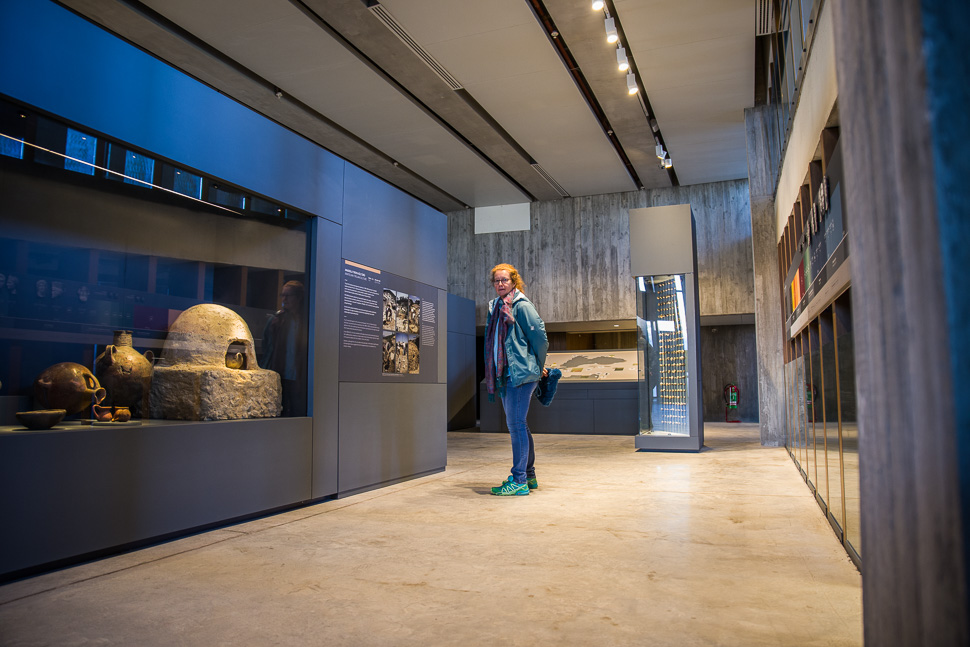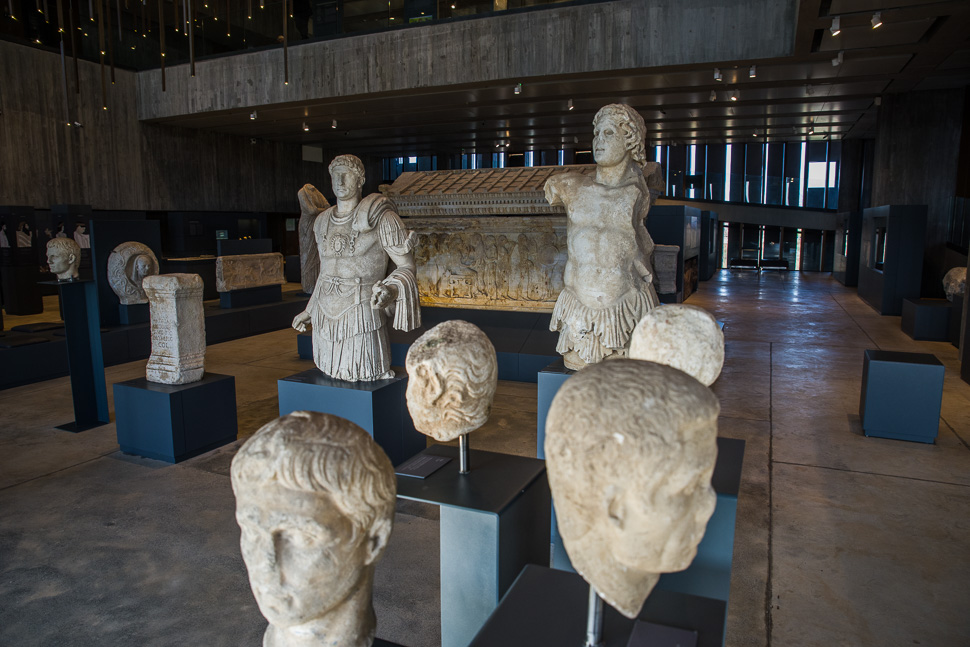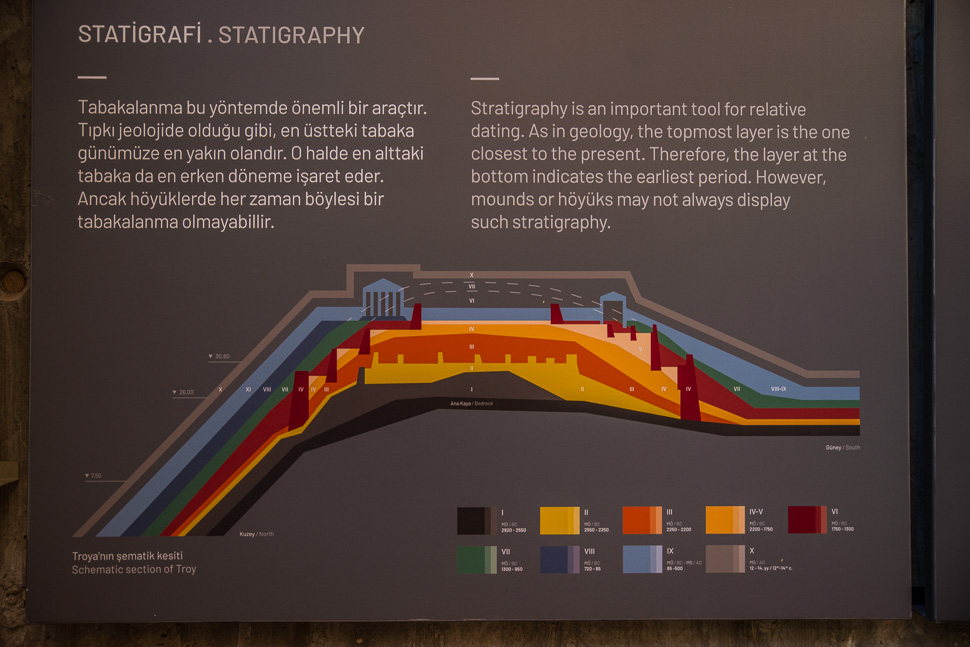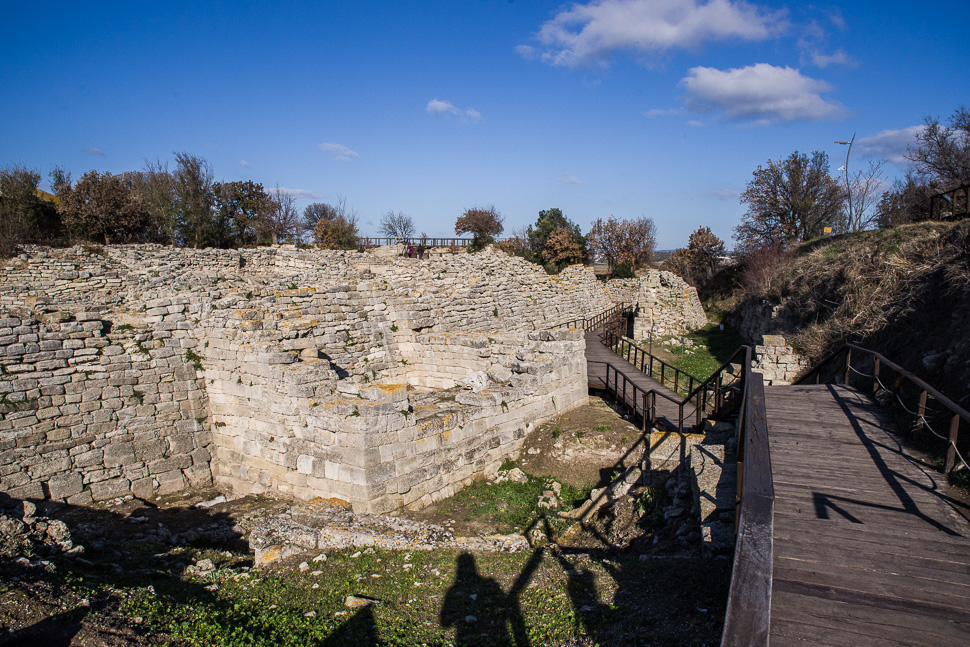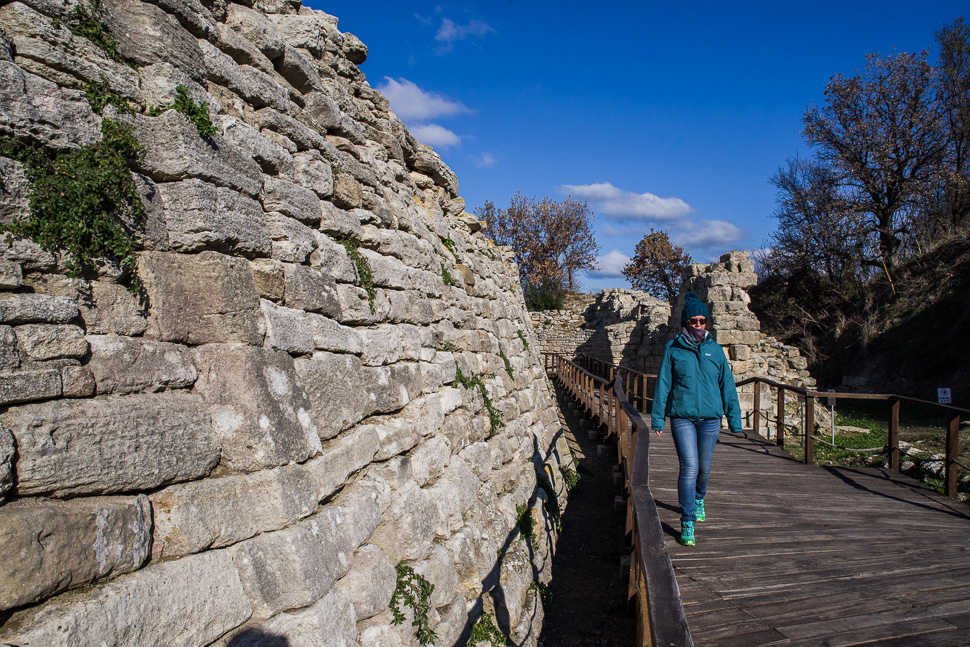On the first day of the new year we had crossed the border to Turkey, continued south to Çanakkale and finally reached Troy, the first archaeological site on our route.
With the ferry, we had crossed the Dardanelles to Çanakkale, where we managed to get a Turkish SIM Card from Vodafone and Turkish Lira from an ATM. From here it was not far to Troy, where we spent the night before we went sightseeing.
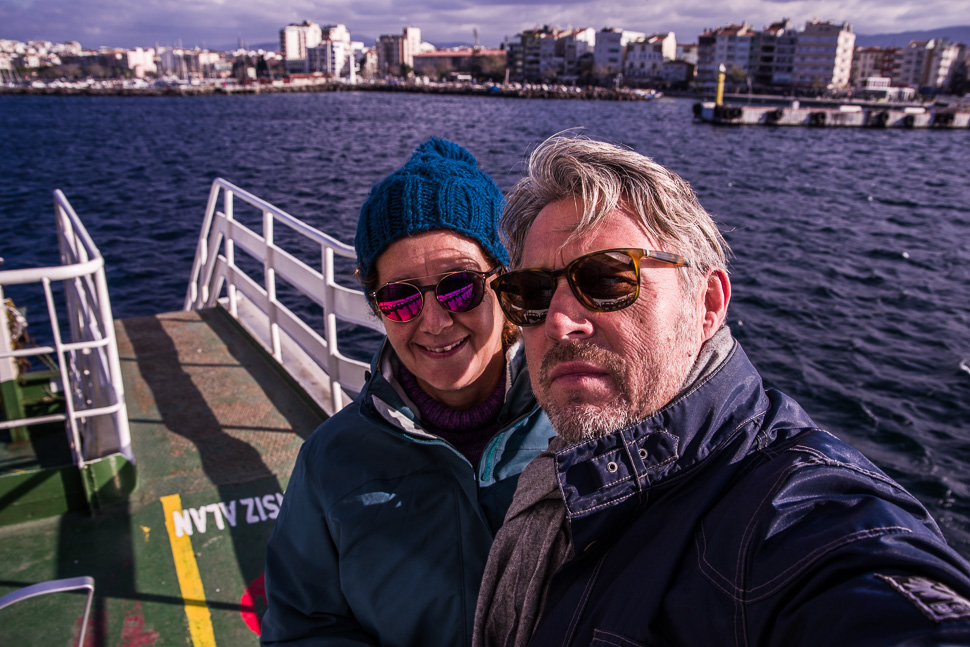 |
| @ the ferry crossing the Dardanelles |
 |
| Cochecitos first metres on the Asian continent! |
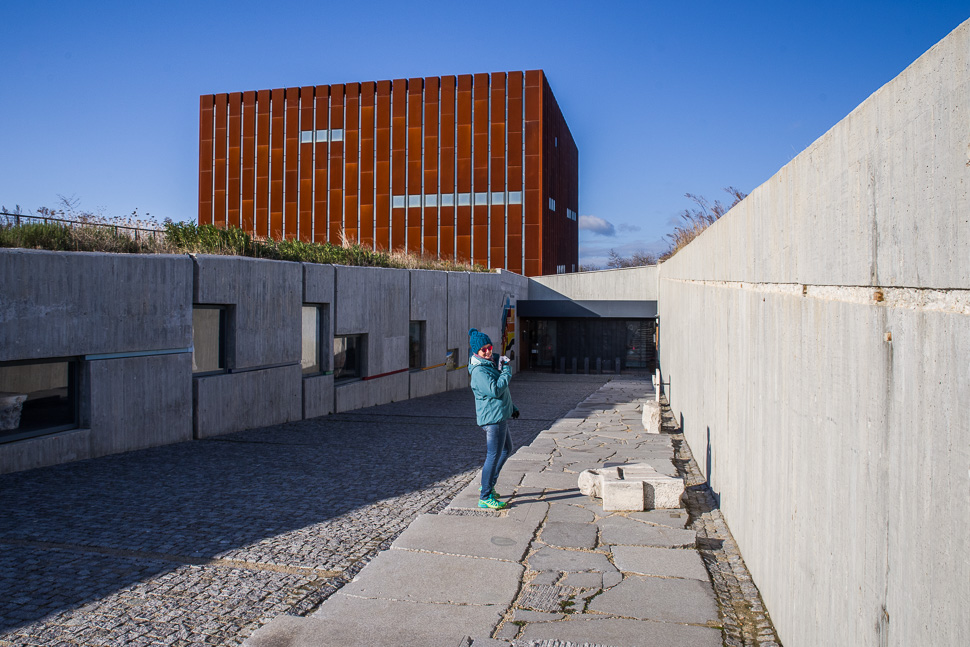 |
| Museum of Troy |
In the 12th century BC, a Greek armada sailed to the east. Its goal: to bring Helena, the most beautiful woman in the world, kidnapped to Troy, back to Greece. It is the beginning of the story of all stories, the most famous and oldest epic in world literature: the Iliad by Homer.
When the war had been going on for ten years, Odysseus had the idea to build a huge wooden horse, which was given to the Trojans as a winning gift. The Greeks pretended to give up and retreat. But the opposite was the case.
The bravest Greeks hid in the horse that the Trojans unsuspectingly rolled into their city as spoils of victory. At night, the Greeks climbed out of the horse’s belly and opened the gates to their army. A terrible bloodbath ensued: the Greeks killed King Priamos and all Trojan warriors.
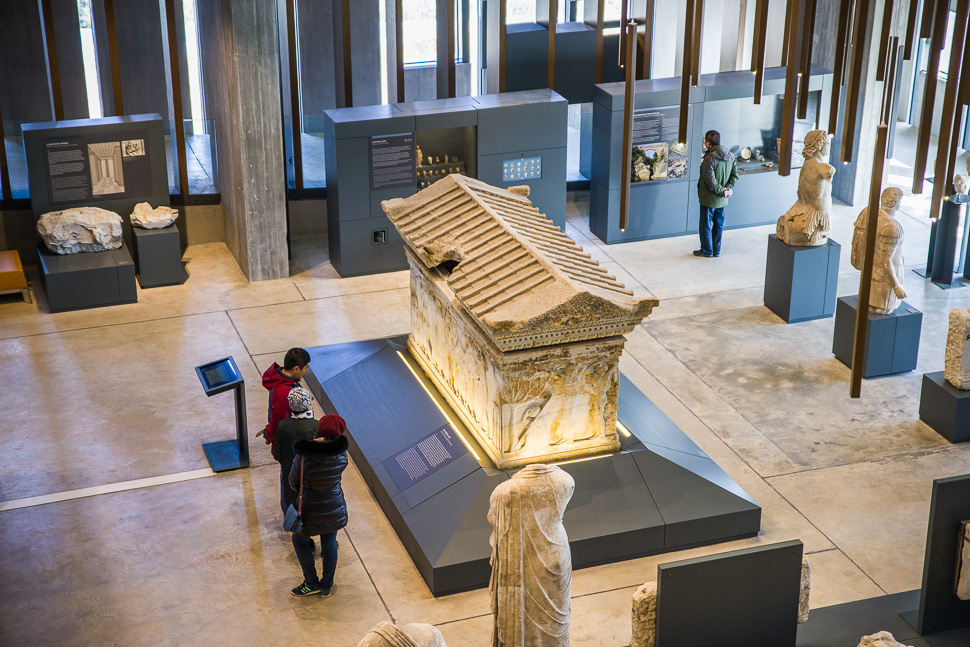 |
| Sarcophagus with beautiful reliefs |
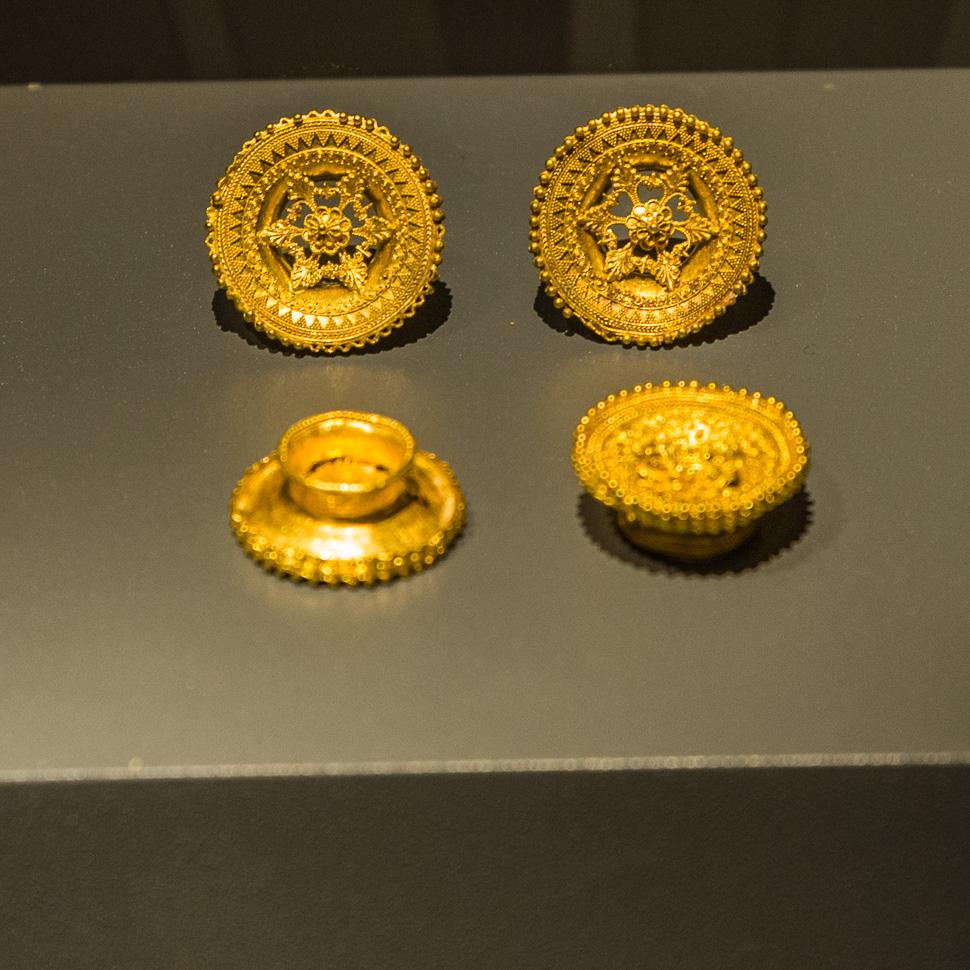 |
| Beautiful gold decorations |
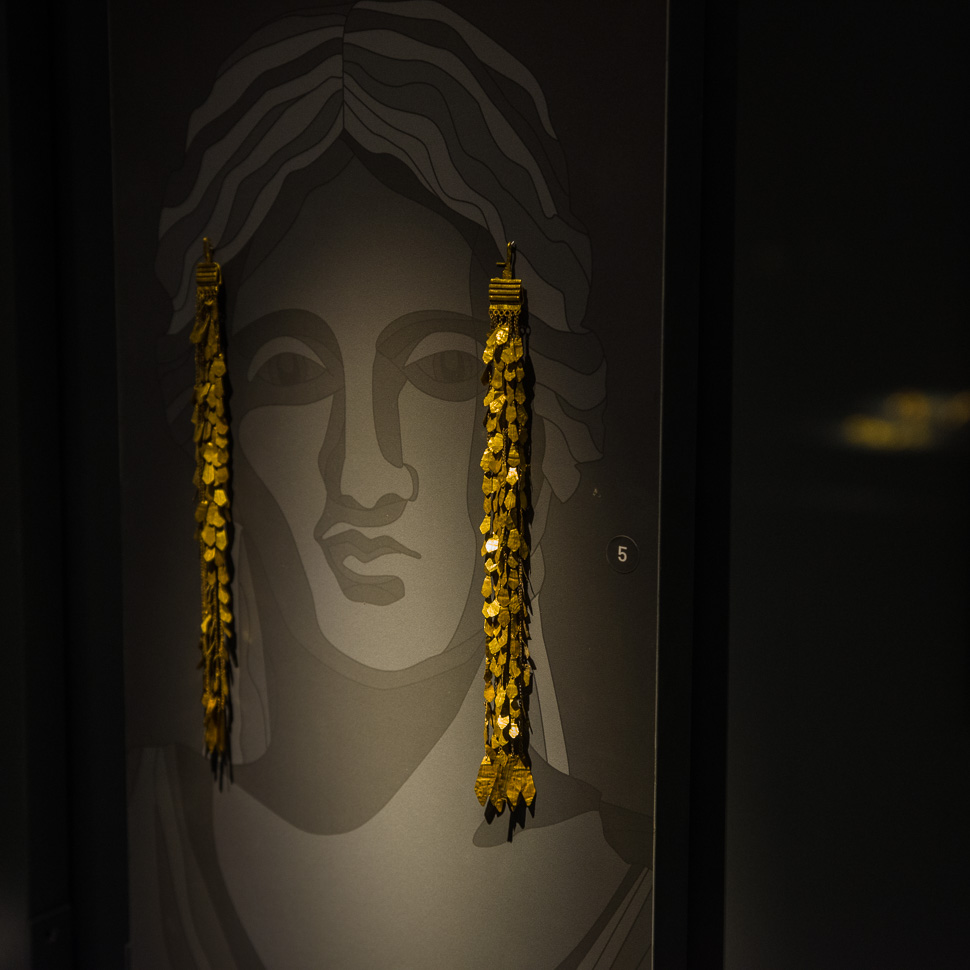 |
| My favourite – fastened to some headdress |
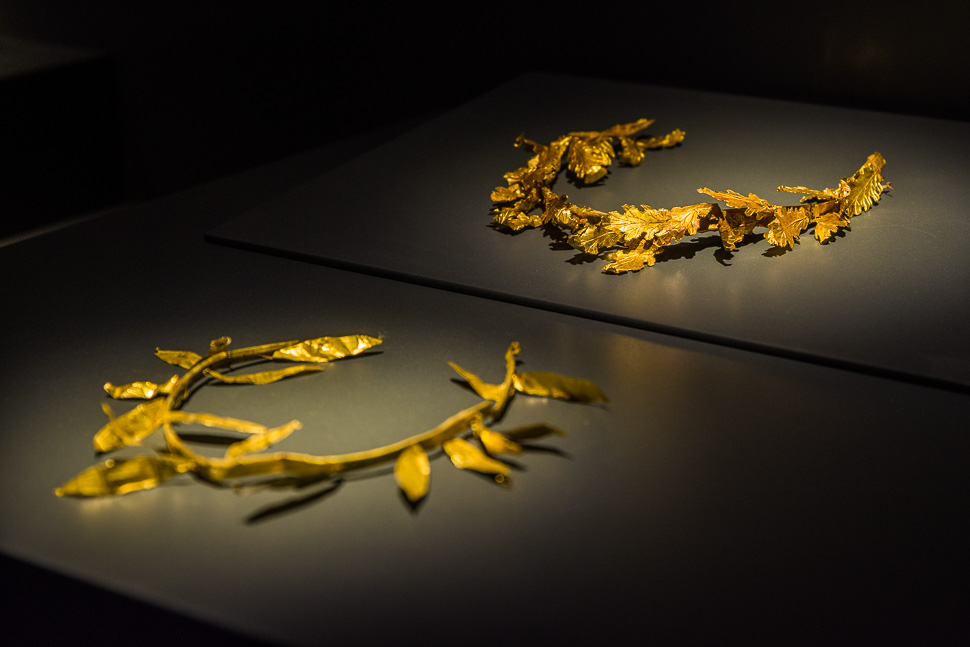 |
| Golden laurel wreath |
The archaeological site of Troy contains 10 layers of different periods, the first from about 3000 BC, the last from the Roman period. Schliemann, a German millionaire who discovered Troy and excavated here from 1870 onwards, had to dig deep to find the Troy from the Iliad he was looking for.
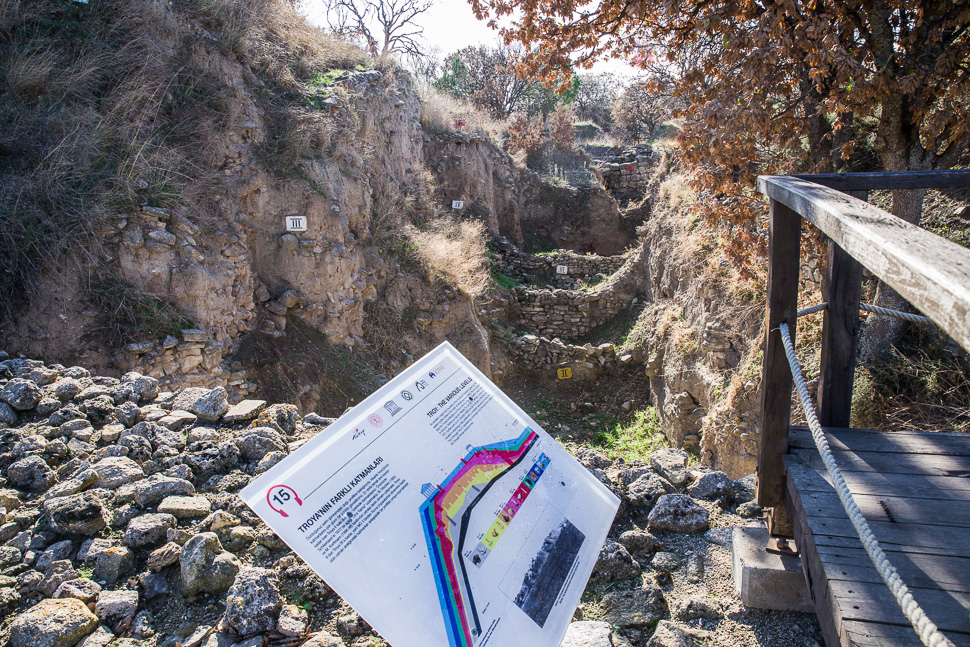 |
| Schliemann cuts a 17 meters deep trench across the hill to find his Troy |
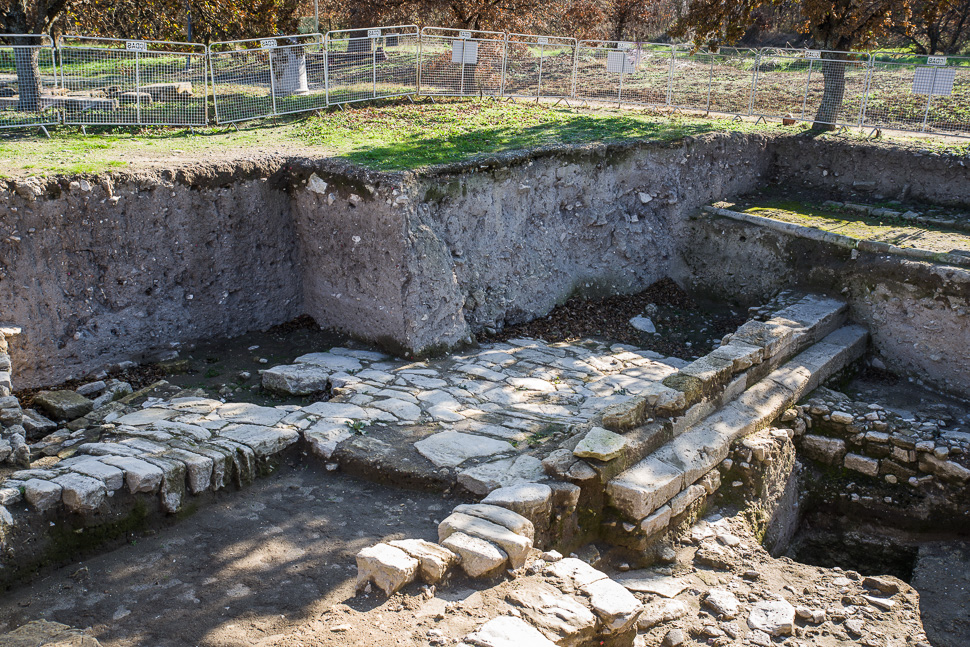 |
| 1.5 metres under the actual surface, you find the Romans |
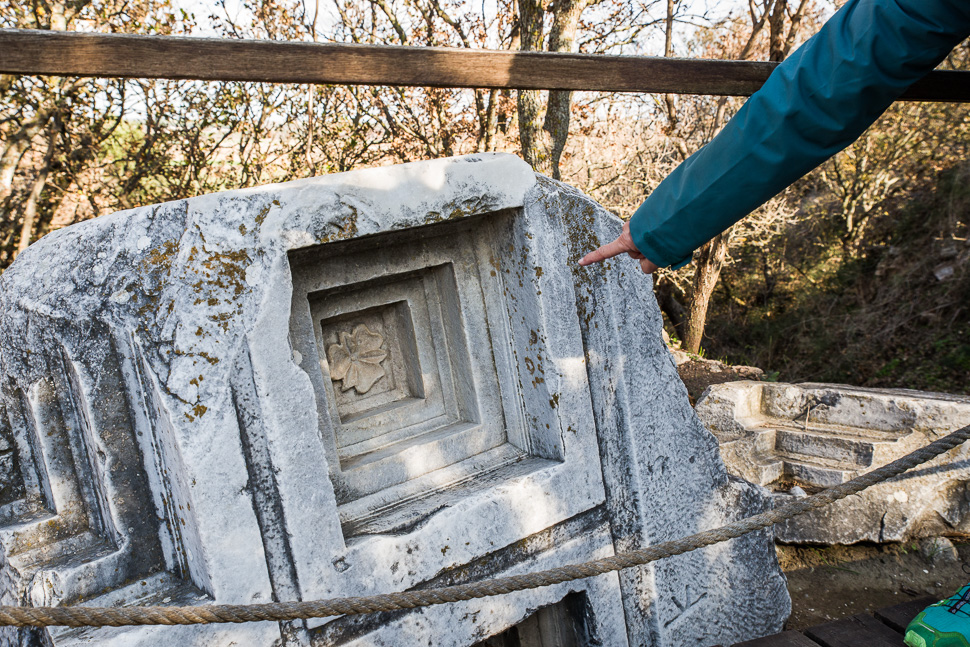 |
| Ceiling of a temple |
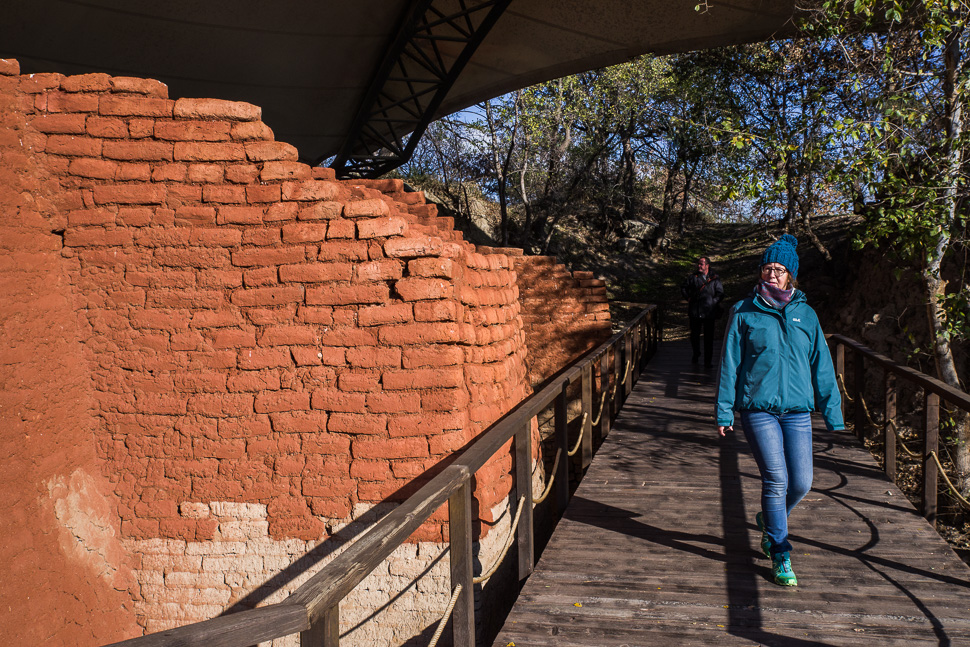 |
| Reconstructed walls |
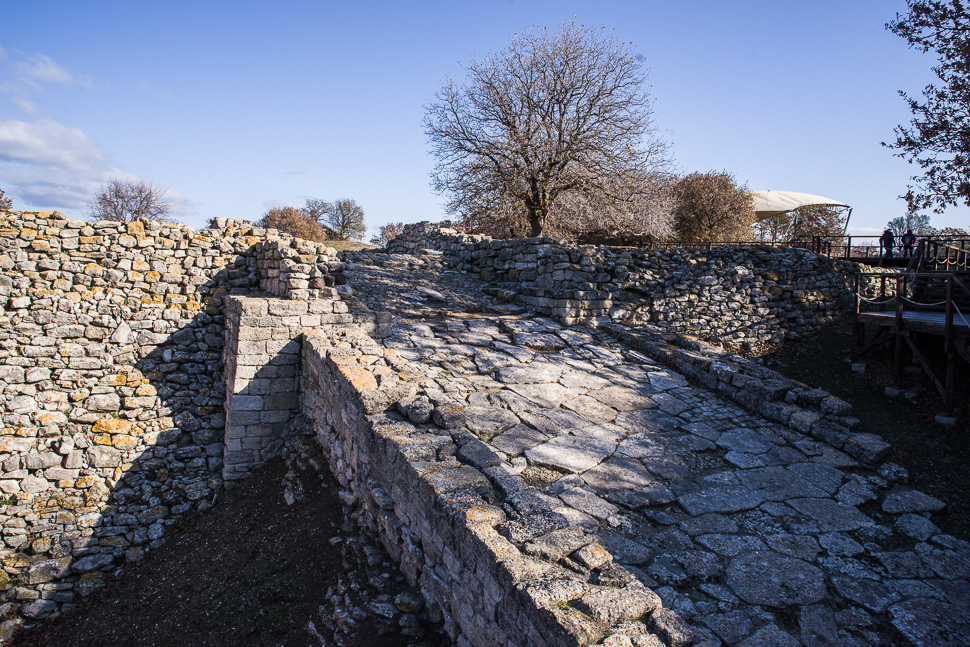 |
| Ramp of the citadel of Troy II |
Next to this ramp Schliemann found a great treasure of gold jewellery which he smuggled out of the country to Berlin, contrary to the agreements with the government of the Ottoman Empire. During the Second World War, the treasure fell into the hands of the Red Army. For half a century, the priceless treasures were considered lost, until the Russian government confirmed that it is kept in the Pushkin Museum in Moscow. Schliemann considered it as the treasure of Priamos, the king of the Trojans, but it is now clear that the gold decorations are much older, dating to 2500 BC.
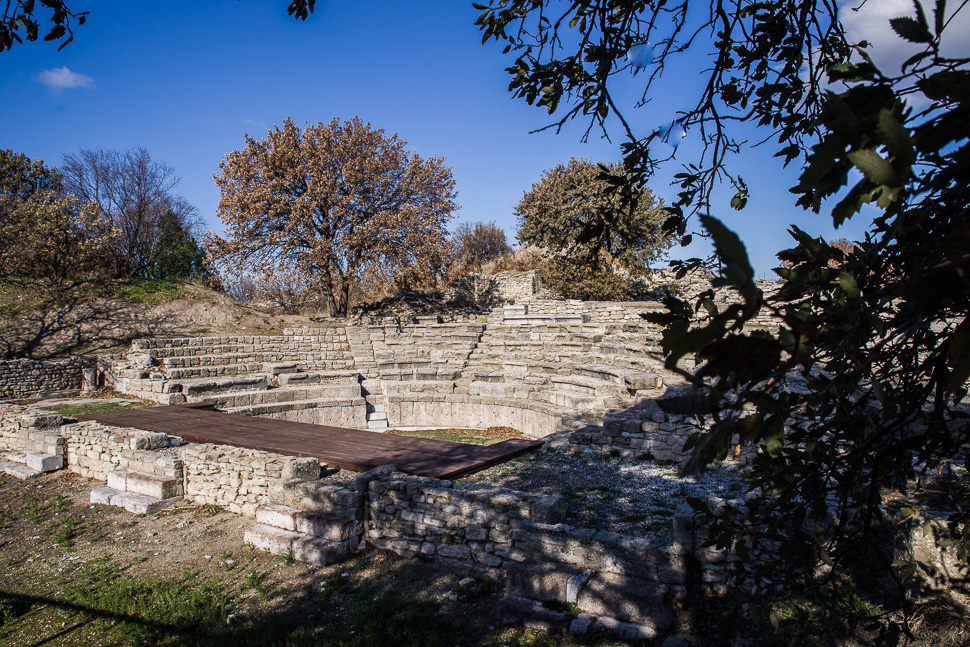 |
| Odeon |
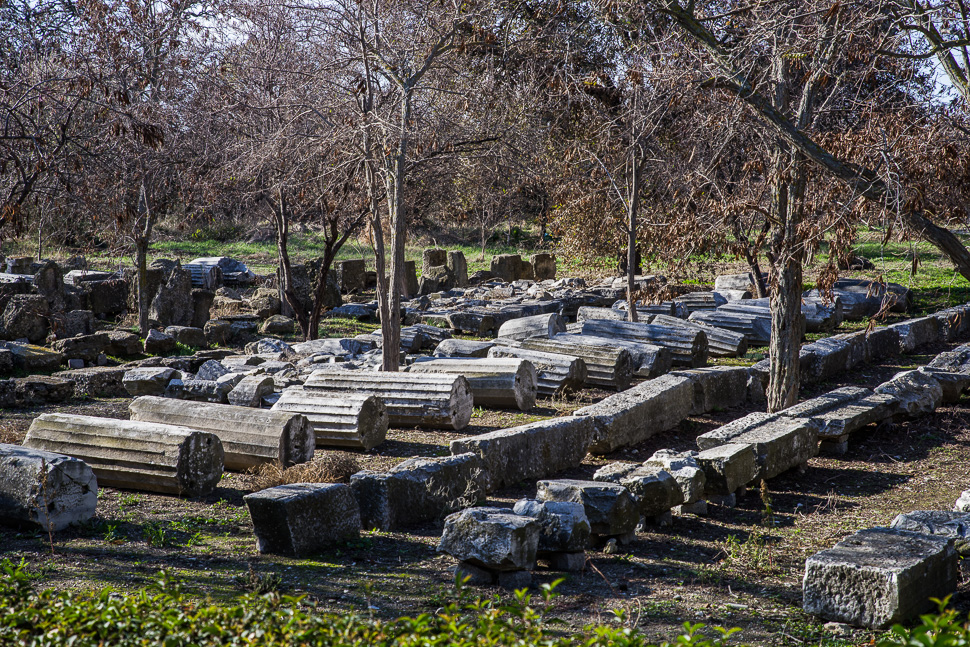 |
| Columns and other parts neatly sorted |
